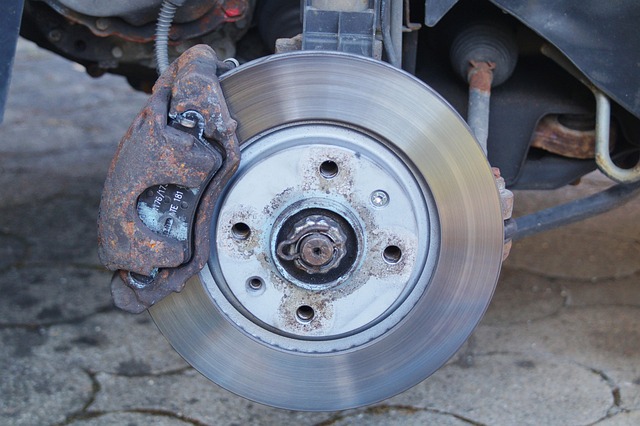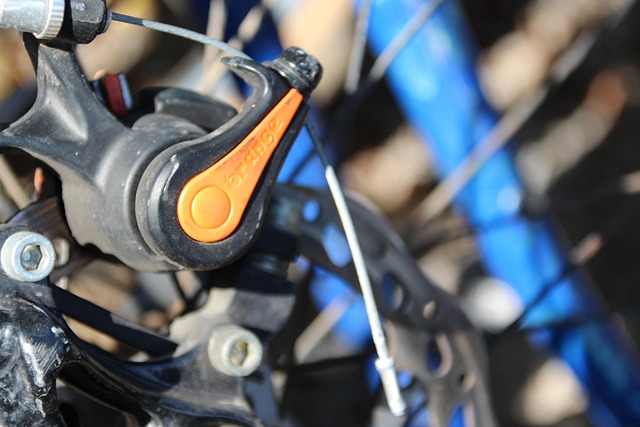The select brake system is a critical component for safe vehicle operation, converting kinetic energy into heat through friction. Key elements include pads, rotors, calipers, and master cylinders, with modern advancements like ABS and ESC enhancing safety. Universal brake kits cater to custom car enthusiasts. Regular inspections are recommended, focusing on pad thickness and rotor warpage. Quality and compatibility are crucial when selecting new systems, with disc brakes offering superior cooling for daily drivers and off-road vehicles. Advanced technologies and custom upgrades enhance braking performance and visual appeal in sports cars. Proper maintenance, including regular inspections and cleaning techniques, extends brake life and ensures optimal safety.
“Unleash control and safety on the roads with our comprehensive guide to replacing your brake system. Understanding the intricate functionality of brake systems, recognizing wear and tear, and selecting the right type are crucial steps in this process. Learn about different options available, ensuring you make an informed decision when choosing a new set. We’ll walk you through installation best practices, maintenance tips, and more, helping you extend the lifespan of your vehicle’s critical braking system.”
- Understanding Brake System Functionality: A Comprehensive Overview
- Identifying Wear and Tear: When to Consider a Replacement
- Types of Brake Systems: Exploring Your Options
- Selecting the Right Brake System for Your Vehicle
- Installation Process: Ensuring Safety and Effectiveness
- Maintenance Tips: Prolonging the Lifespan of Your New Brake System
Understanding Brake System Functionality: A Comprehensive Overview

Understanding Brake System Functionality: A Comprehensive Overview
The select brake system is a critical component in any vehicle, ensuring safe and controlled movement. It operates by converting kinetic energy into heat through friction, slowing down or stopping the vehicle. This process involves several key elements, including brake pads, rotors, calipers, and master cylinders. Each plays a vital role in generating the necessary braking force to bring the vehicle to a stop.
In modern vehicles, particularly those equipped with autonomous driving features, braking systems have evolved significantly. Advanced technologies like anti-lock braking systems (ABS) and electronic stability control (ESC) enhance safety by preventing skidding and improving vehicle handling. Furthermore, the integration of sensors and software allows for precise control and rapid response times, making autonomous vehicles safer on the road. For custom car enthusiasts, universal brake kits offer a versatile solution, enabling them to customize their vehicles with high-performance braking systems that match their unique driving needs. Meanwhile, regular brake system inspections are recommended to ensure optimal performance and safety, with costs varying based on the vehicle’s make and model.
Identifying Wear and Tear: When to Consider a Replacement

Identifying wear and tear is a critical step when considering whether to replace your brake systems. Regularly inspect your brakes for signs of damage or reduced performance. Over time, brake pads can become thin, and rotors may develop cracks or warping, leading to decreased braking efficiency and increased stopping distances. These issues are not only safety hazards but also indicators that a replacement is necessary for optimal vehicle control and stability.
When it comes to selecting brake systems, prioritizing quality and compatibility is essential. For commercial vehicle brake servicing, off-road vehicle brake systems, or even used brake parts marketplace options, ensure that the replacements meet industry standards and are suitable for your specific make and model. Regular maintenance and prompt attention to wear and tear can extend the life of your brakes, ensuring a smoother ride and enhanced safety on the road.
Types of Brake Systems: Exploring Your Options

When it comes to selecting the right brake system for your vehicle, there are several options available, each with its unique advantages and considerations. Understanding these types is crucial for ensuring optimal braking performance and safety. Modern vehicles typically offer disc brakes and drum brakes as standard equipment, but specialized applications may call for different configurations.
Disc brakes, a popular choice for their superior cooling capabilities and easier maintenance, involve a circular rotor spun by the wheels. This design allows for more consistent braking power and reduced brake dust, making it an ideal option for daily drivers and off-road vehicles alike. For scenarios demanding enhanced stopping force and heat dissipation, such as high-performance cars or heavy trucks, floating calipers and larger rotors can be selected. In contrast, drum brakes, while less common on modern passenger vehicles, offer advantages in certain situations, like in rugged terrain where excessive brake dust reduction techniques are not a priority. Best brake maintenance packages often involve regular inspections and replacing worn parts to maintain peak braking efficiency. For off-road vehicle brake systems, durability and robust performance are key considerations to ensure safe navigation through challenging terrains.
Selecting the Right Brake System for Your Vehicle

When selecting a brake system for your vehicle, it’s crucial to consider both performance and safety. The right brake system should be compatible with your car’s make and model, while also aligning with your driving style and intended use. For instance, those looking to enhance their driving experience in sports cars can opt for custom brake upgrades that offer superior stopping power and improved control, enhancing both speed and maneuverability on the track.
Advanced technologies like dynamic brake control play a significant role in modern vehicle braking systems. This technology ensures precise and responsive braking by automatically adjusting pressure to each wheel, reducing skid and improving overall stability. Additionally, focusing on brake dust reduction techniques can enhance not only performance but also visual aesthetics, as less brake dust translates into cleaner wheels and improved overall vehicle appearance.
Installation Process: Ensuring Safety and Effectiveness

When replacing brake systems, especially in performance vehicles like sports cars, understanding the installation process and prioritizing safety is paramount. The first step involves evaluating the existing brake components and identifying whether a master cylinder repair or replacement is more feasible. Custom brake upgrades for sports cars often require specialized knowledge due to their intricate design and higher performance standards.
Choosing the right Select Brake Systems ensures both effectiveness and longevity. Following manufacturer guidelines strictly during installation is crucial, especially when dealing with high-performance brakes. Regular maintenance checks and considering best brake maintenance packages can significantly extend the life of your new brake system while ensuring optimal safety during each drive.
Maintenance Tips: Prolonging the Lifespan of Your New Brake System

Proper maintenance is key to ensuring your new brake system provides years of reliable performance. Regularly inspect your front brake pad replacement tips for signs of wear, as well as any visible damage or warping in the rotors. Addressing issues early can prevent more severe problems and prolong the lifespan of your entire braking system.
Consider implementing brake dust reduction techniques to minimize the buildup of residue, which can not only affect the aesthetics of your vehicle but also contribute to reduced braking efficiency. Keeping your brake components clean and well-maintained is as easy as regularly washing your car and using high-quality car brake replacement parts online. By adhering to these simple front brake pad replacement tips, you’ll help maintain optimal braking performance and safety for many miles to come.
In conclusion, understanding your vehicle’s brake system functionality is key to ensuring safety on the road. By identifying wear and tear early and choosing the right type of brake system for your needs, you can extend the lifespan of your brakes significantly. A well-installed and properly maintained brake system is a vital investment for any driver. When it comes to selecting brake systems, doing your research and consulting professionals is essential. Remember, effective braking is non-negotiable for your safety and peace of mind.
